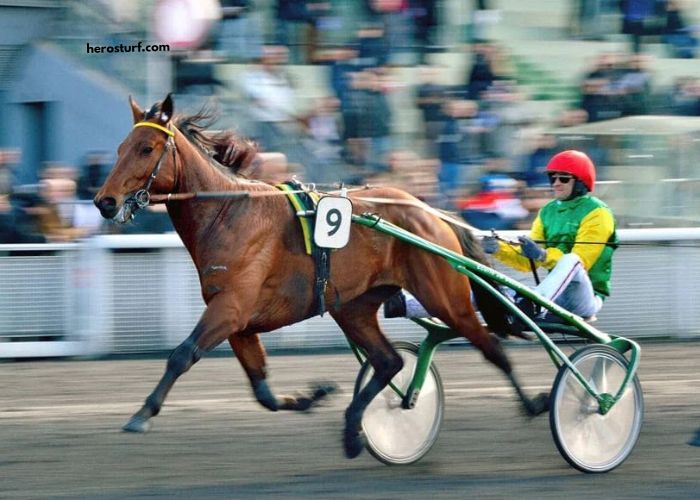Trio 3 Chevaux
Trio 3 Chevaux is one of the most exciting and rewarding horse betting strategies in the PMU world, drawing in punters who love risk and skill. This bet type challenges bettors to select three horses that will finish in the top three positions of a race, regardless of order.
Thanks to its blend of complexity and high potential payouts, Trio 3 Chevaux has gained massive popularity in the racing community. It’s not only a game of chance but one of insight, research, and precise analysis of horse performance and race structure.
What Is Trio 3 Chevaux In Horse Racing?
Trio 3 Chevaux is a betting format that involves choosing three horses to finish in the top three positions of a race, in any order. Unlike exactas or trifectas where order matters, Trio 3 Chevaux simplifies the challenge slightly while still demanding that your selected horses perform strongly. This makes it both accessible for beginners and strategic for seasoned punters.
The excitement around Trio 3 Chevaux stems from the potential for high returns, especially in races with larger fields or unpredictable lineups. Bettors who understand how to read form guides, analyze previous performances, and assess race conditions stand a better chance at mastering Trio 3 Chevaux, making it one of the more skill-intensive yet thrilling bets in the racing scene.
How Can Punters Increase Their Chances Of Winning A Trio 3 Chevaux?
To improve chances of winning with Trio 3 Chevaux, bettors must delve deep into the details of the race. This includes examining the horses’ past performances, the jockeys, the condition of the track, and even the post positions. The aim is to choose three horses that are consistent performers, even if they are not necessarily the favorites, to increase the odds of at least a partial upset that boosts payout.
In races with a clearly dominant horse, it may be wise to pair that frontrunner with two mid-tier horses who have demonstrated the capacity to finish strong. Since Trio 3 Chevaux doesn’t require exact placement, selecting horses likely to place anywhere in the top three maximizes betting value. Using this layered strategy for Trio 3 Chevaux is key to turning good predictions into profitable outcomes.
Why Is Trio 3 Chevaux Popular Among Seasoned Bettors?
Trio 3 Chevaux is popular because it balances risk with potential reward in a way few other bets can. It’s harder than a simple place or win bet but doesn’t demand the precise accuracy of a trifecta. This middle ground attracts serious bettors who are confident in their research but still want manageable odds and strategic flexibility.
The format also allows bettors to express deep knowledge of the sport. For those who study trends, jockey statistics, and race history, Trio 3 Chevaux becomes a proving ground for their insights. The high odds offered for winning combinations make Trio 3 Chevaux particularly enticing during high-profile events, where underdog picks can turn into surprisingly valuable hits with the right combinations.
How Does Trio 3 Chevaux Compare To Other Bet Types?
When compared to win/place/show or even quinella and exacta bets, Trio 3 Chevaux sits somewhere in the middle in terms of complexity and payout. It’s more challenging than predicting a single winner but far less exacting than a trifecta where the finish order must be precisely predicted. This makes it appealing to bettors who want more excitement than basic bets but aren’t ready for full-blown exotics.
Another unique aspect of Trio 3 Chevaux is its versatility. You can apply this bet to nearly any race, from local events to major international competitions. In contrast, other complex bets like Pick 5 or Super High Five may only be viable in select races with large fields. The simplicity, adaptability, and balance of Trio 3 Chevaux make it a favorite for consistent use across betting strategies.
What Strategy Works Best For Betting On Trio 3 Chevaux?
The most effective strategy for Trio 3 Chevaux involves selecting one favorite and pairing them with two horses that show strong finishes, even if they don’t win often. This tactic allows bettors to benefit from the stability of a consistent performer while taking advantage of higher odds provided by lesser-known contenders. Consistently applying this strategy across multiple races increases the probability of profitable returns.
Another smart approach is to use multiple combinations in the same race. This means betting on more than one Trio 3 Chevaux group, especially in races with high levels of competition. While it involves a higher upfront investment, the return from even one winning combination can cover losses and yield profits. The key lies in research, balance, and betting discipline when leveraging Trio 3 Chevaux strategies.
Can Beginners Succeed With Trio 3 Chevaux?
Yes, beginners can definitely find success with Trio 3 Chevaux, especially if they take the time to study the basics of horse racing and betting mechanics. While the format may initially seem complex, the rules are straightforward and offer room for strategic trial and error. New bettors can start with small stakes to test different combinations and learn how form indicators translate into real race outcomes.
Learning how to assess racing forms, pace scenarios, and trainer/jockey combinations is essential. Over time, even novice punters develop an instinct for choosing horses that perform reliably. As they become more familiar with racing patterns, their confidence in placing Trio 3 Chevaux bets grows, eventually transforming what was once a challenge into an exciting and potentially lucrative routine.
Conclusion
Trio 3 Chevaux represents the perfect balance of risk, reward, and skill in the horse racing betting world. Its structure challenges bettors to choose wisely without the stress of perfect order placement, making it a dynamic choice for both novices and experts alike.
With strategic insight, consistent research, and a clear understanding of how race conditions and horse performance align, punters can turn Trio 3 Chevaux from a gamble into a calculated opportunity for consistent success.



